One of the worlds crown jewels of ruins lie in the Cambodian rainforest north of Siem Reap. Angkor Wat is the main attraction of the area, but there are at least 50 temples in the region, which were all part of an ancient city. They all form the ruins of Angkor, once the largest city in the world at the height of the Khmer empire (9th to 14th century), with an estimated one million people living in the region during its busiest.
Now, there are small villages and shops nestled between the trees and temples. We spent the first day exploring a neighboring region of Beng Mealea, but today we would tackle the most important and famous temples in the region.
We went our with our favourite tuk tuk driver Pouen again for the day, and our friend Pragati from the hostel. We started early to try and beat the sun, and that worked for the first temple, and the first one only. It was a hot day.
The morning wasn’t thouhg. It was a short, busy, breezy drive to the main entrance, the sunrise viewpoint. We were a couple hours late for that, and a couple hours late yo beat the crowds. It was busy.
The first view of Angkor way is that of awe. Beyond the front gate, you can see the silhouette of three main towers over the skyline. Backlit with mystery and excitment to see what lay behind the walls.
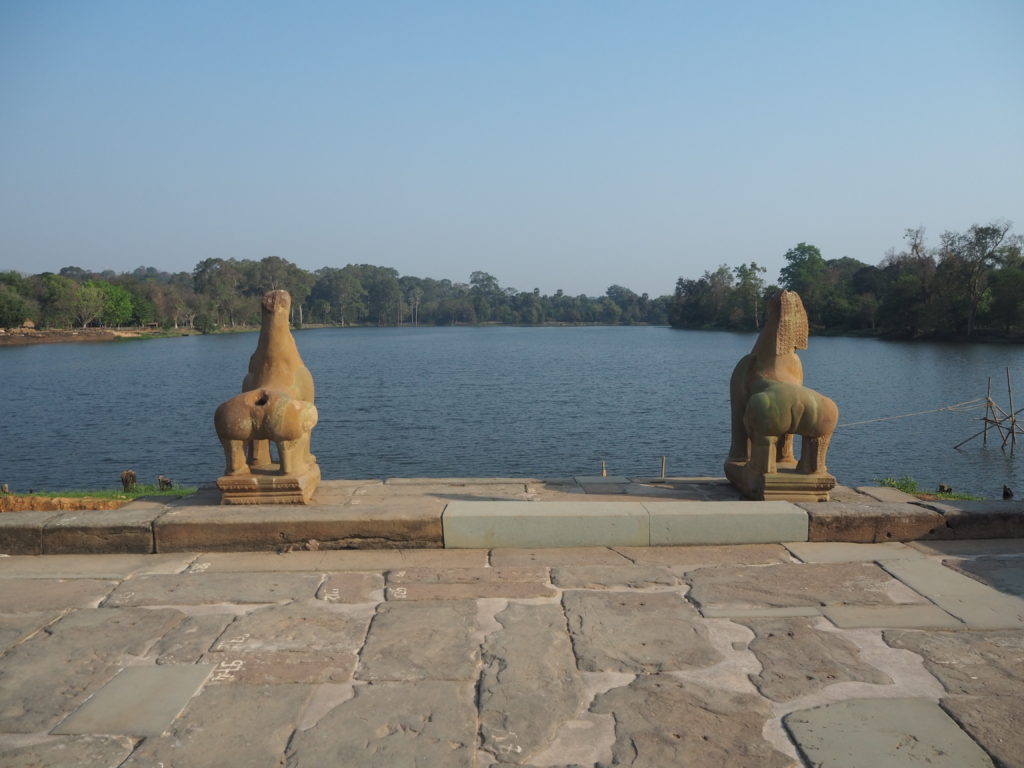
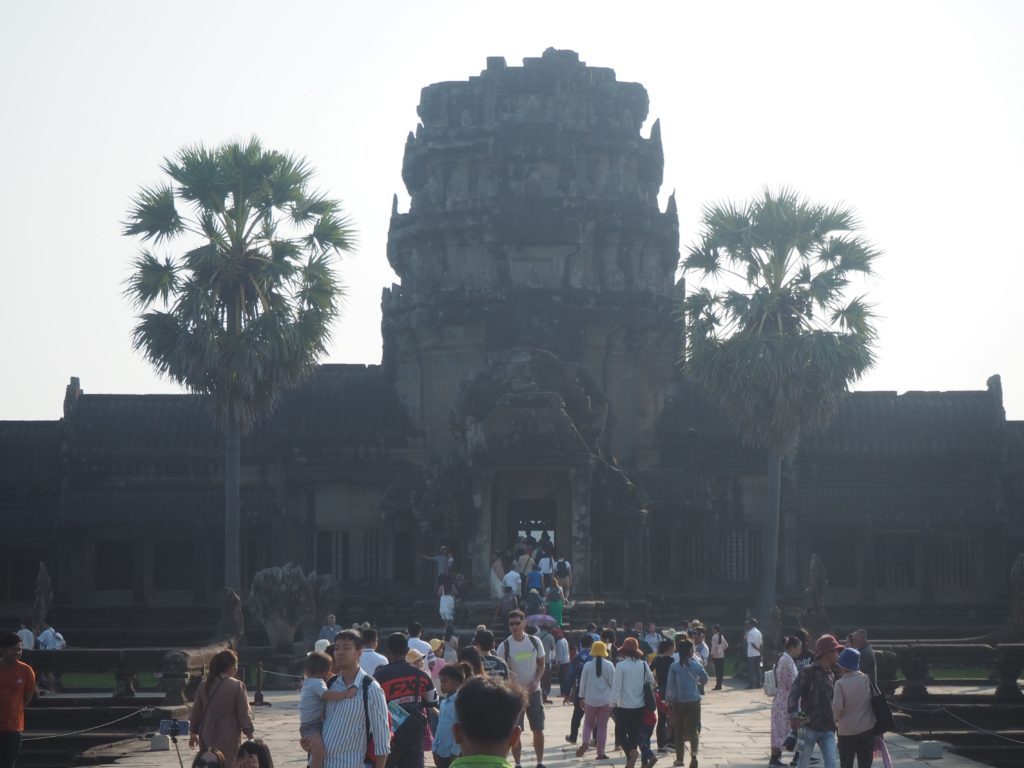
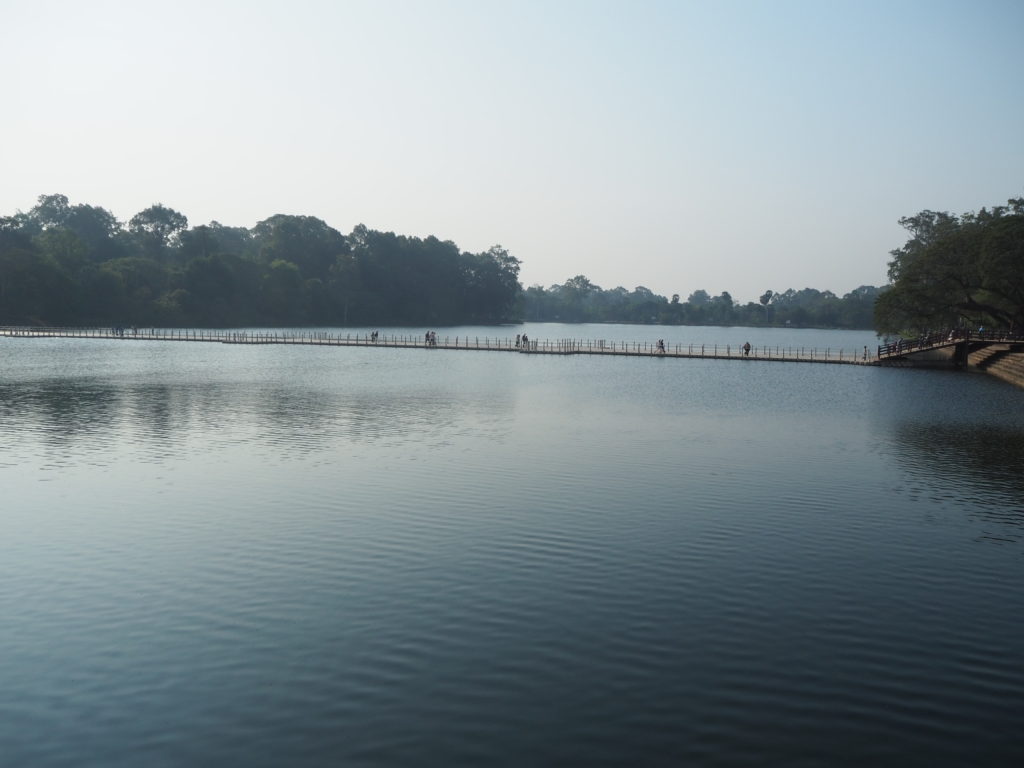
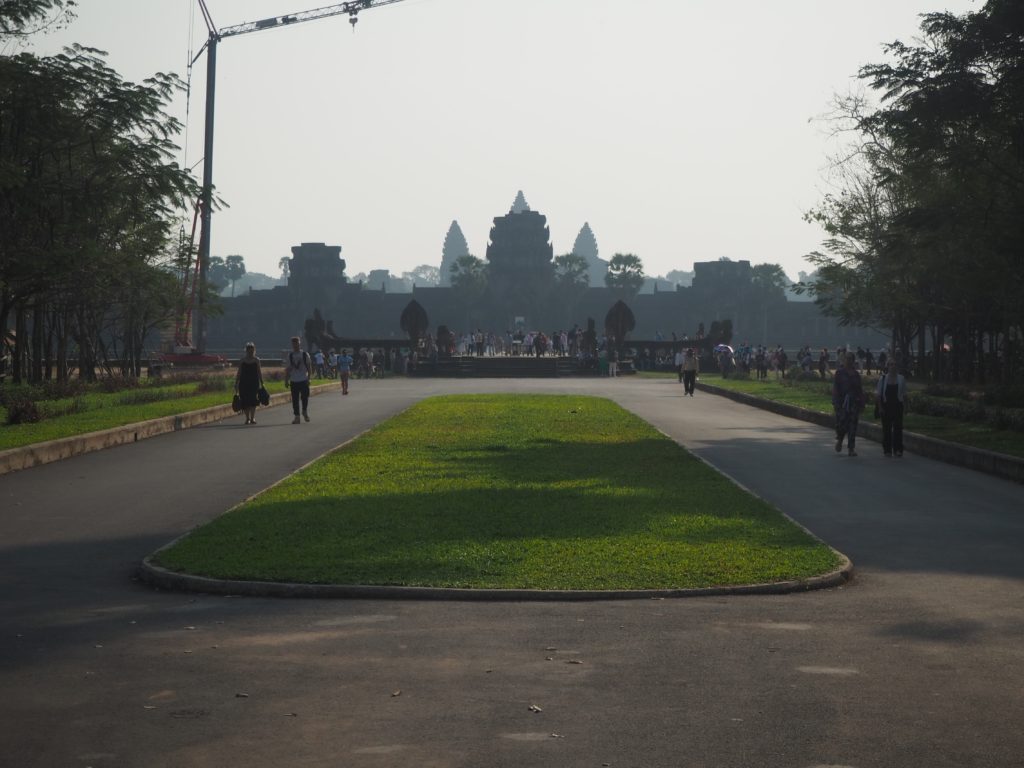

Beyond the exterior wall of Angkor Wat is a large open garden. Here you can cross another promenade towards the temple complex itself. The courtyard of sorts is filled with smaller ruins that you can explore. There were some wedding photoshoots occurring on these satellite buildings, waiting for their opportunity to get that photo without the crowds.
Getting that photo is near impossible though. This ancient Hindu temple is chalk full of every tourist possible. It’s estimated that around 2.5 million people visit the temple per year. It just doesn’t look that busy (apart from the main spots) because the place is just so big.
We explored this area for a while, checking out the couple of external buildings. We were not able to explore the outer walls, though there were halls in them. Finally the main temple enticed us too much, and we ventured inside.

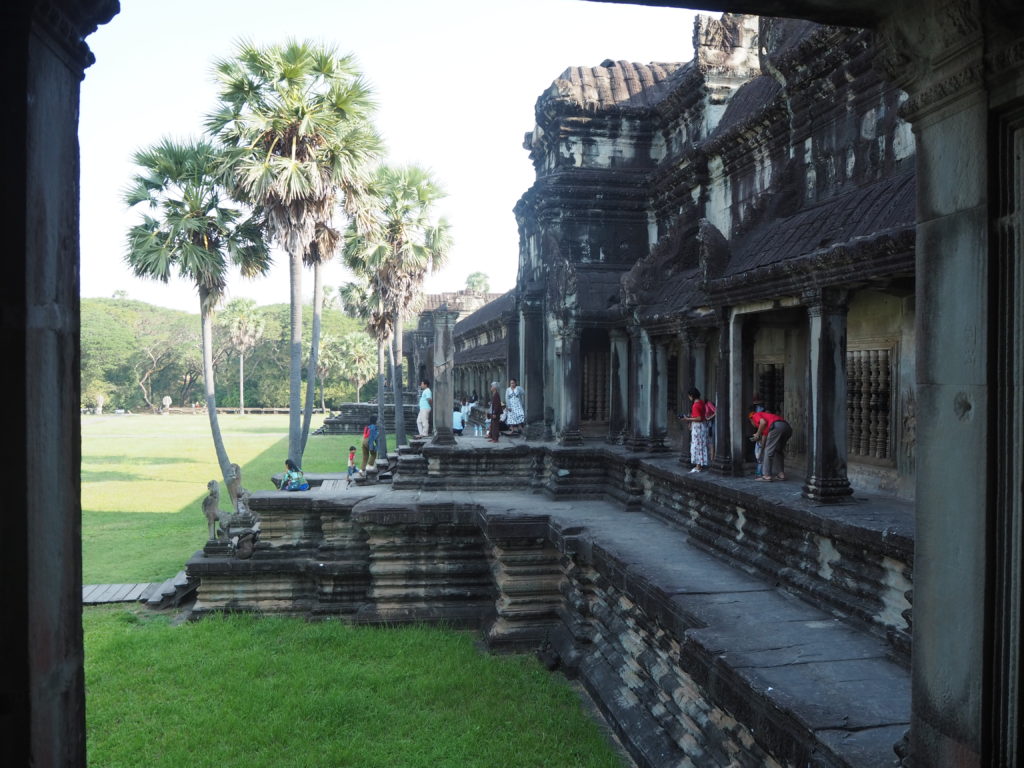
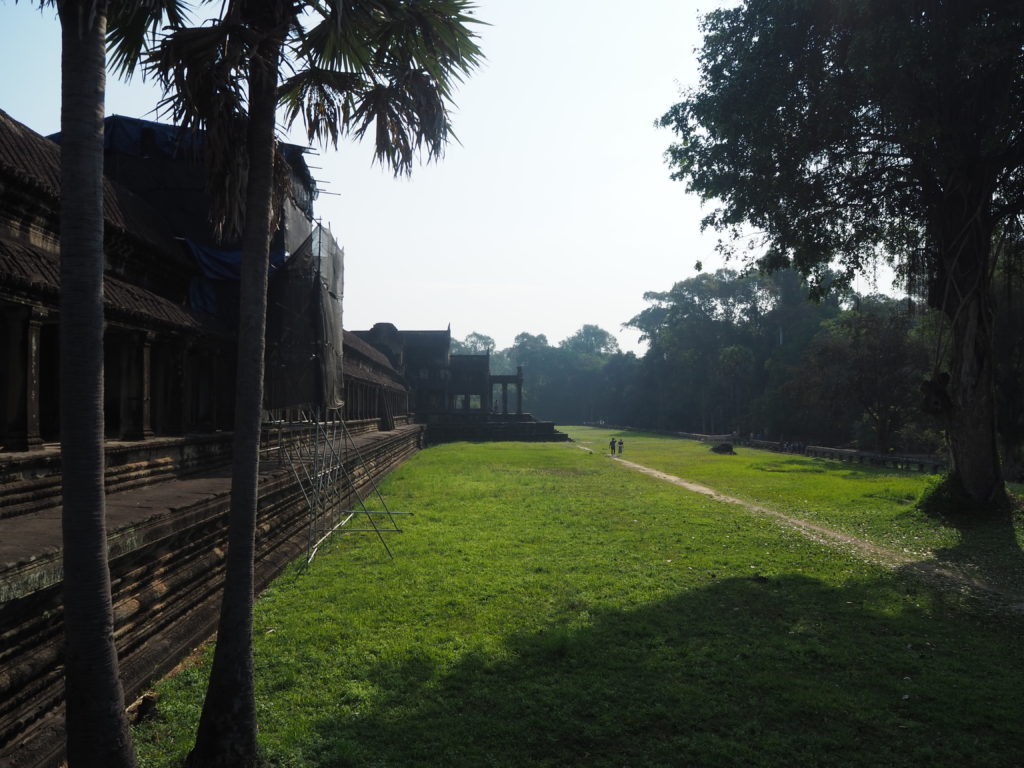
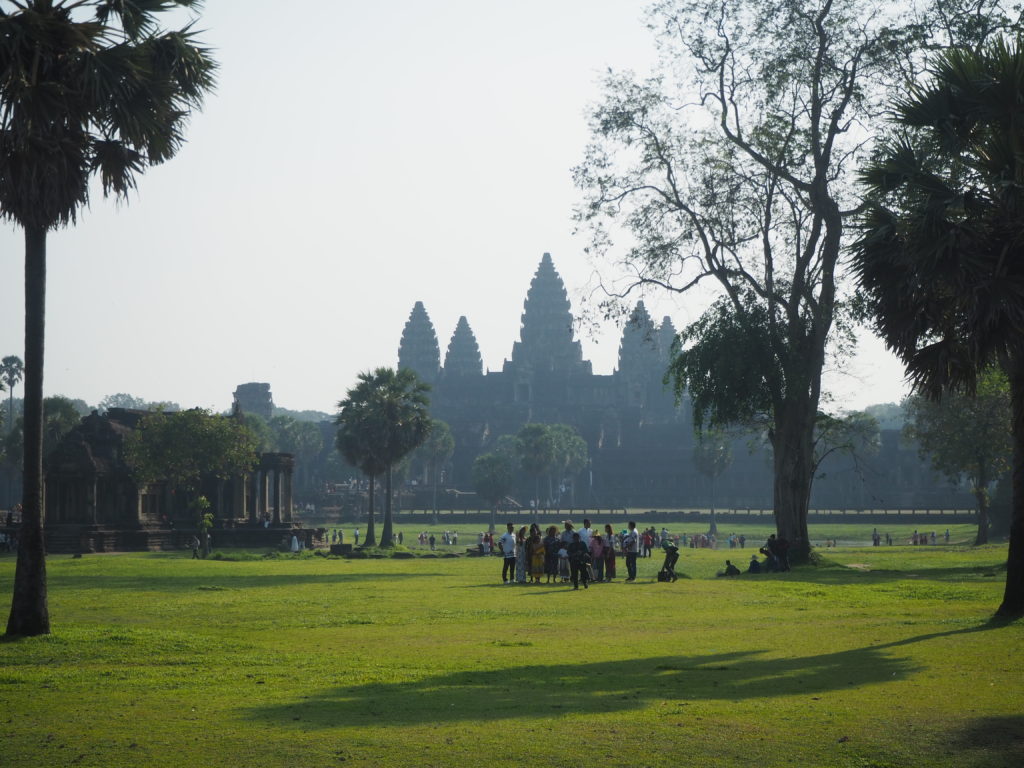
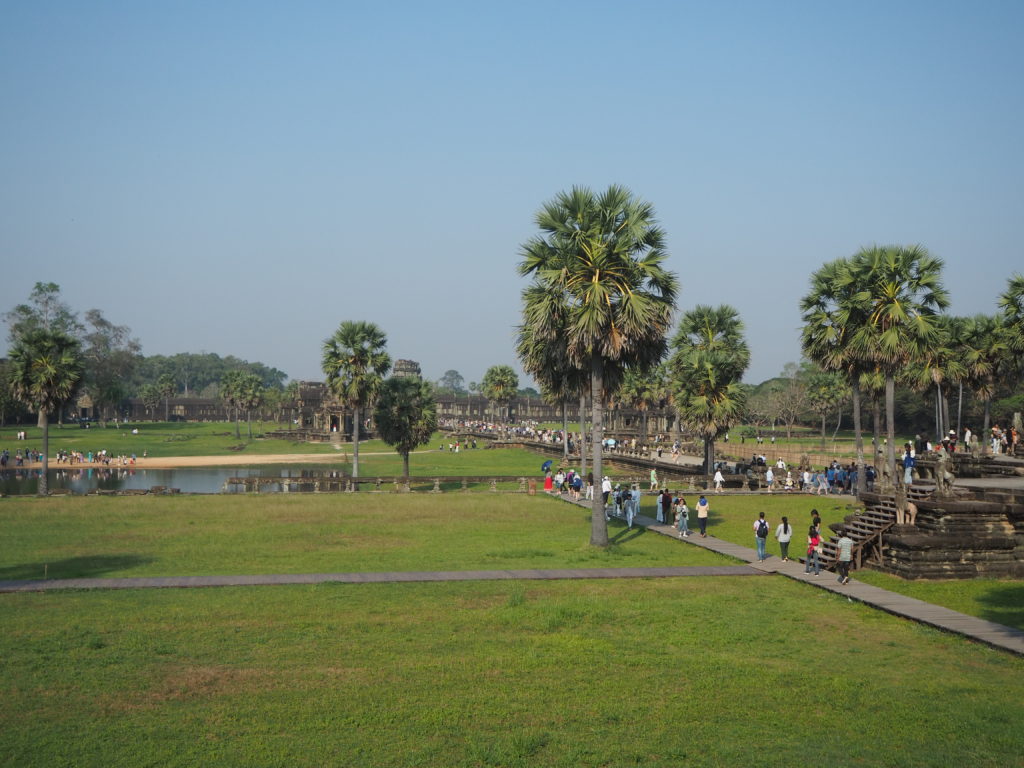
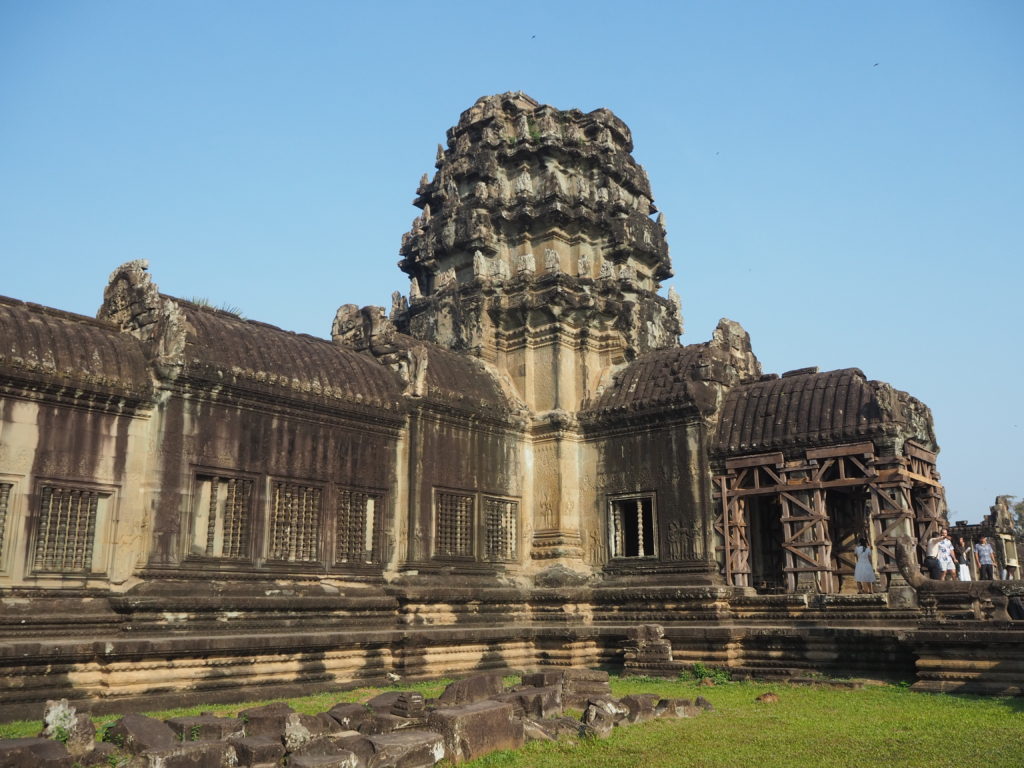
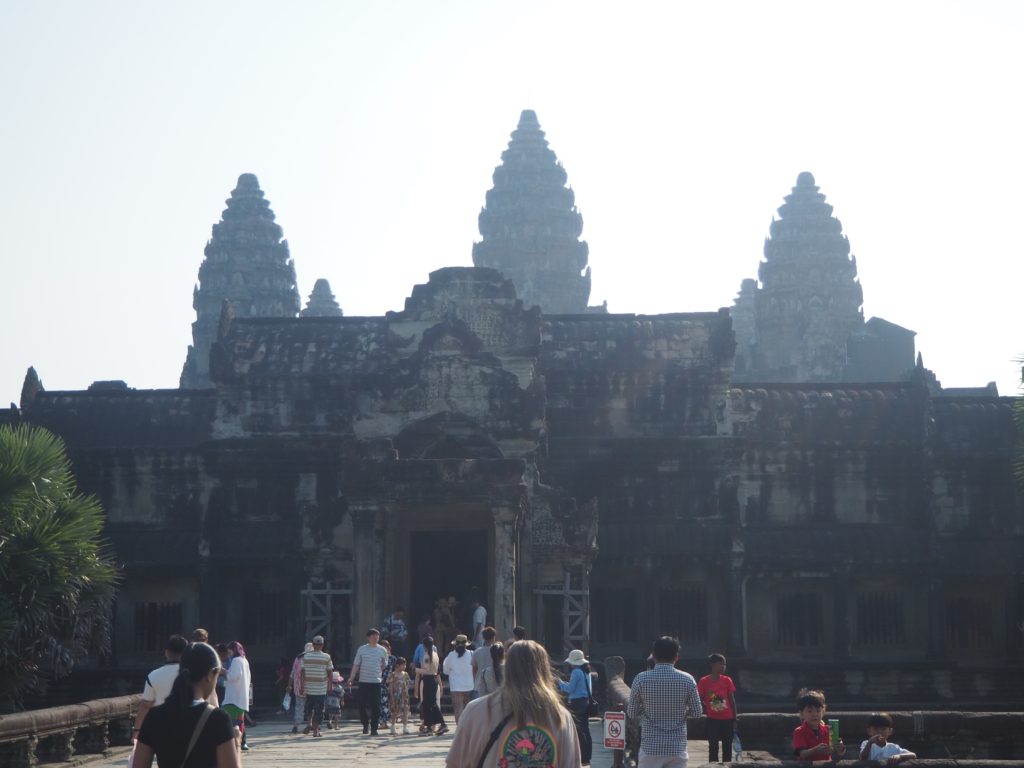
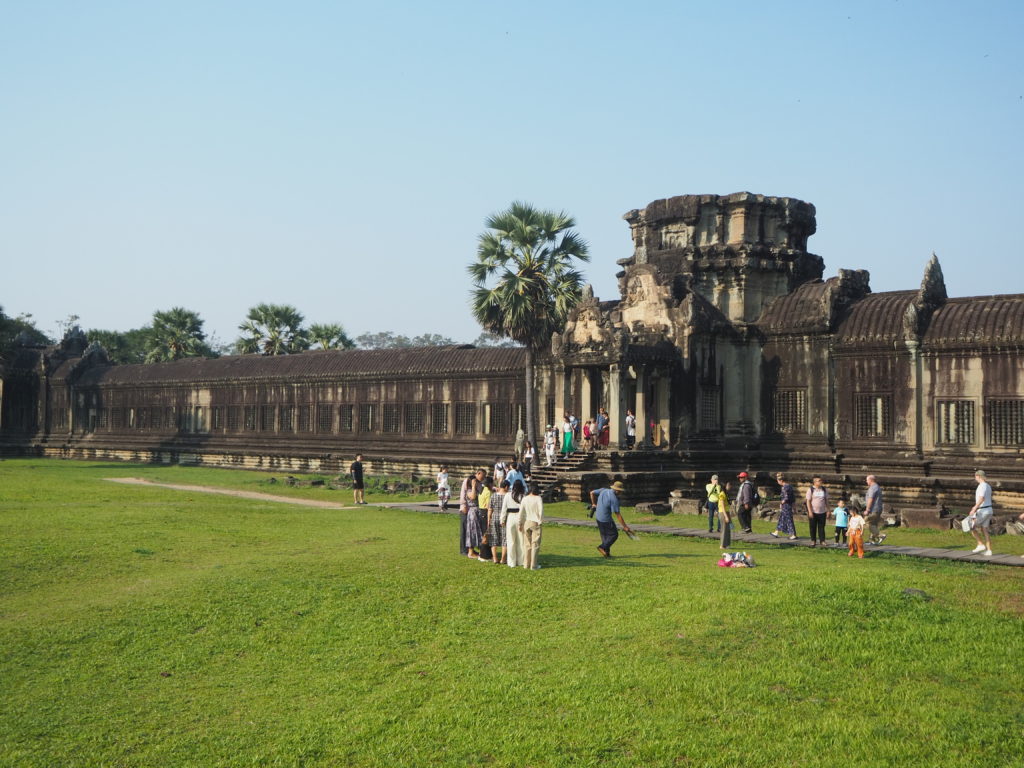
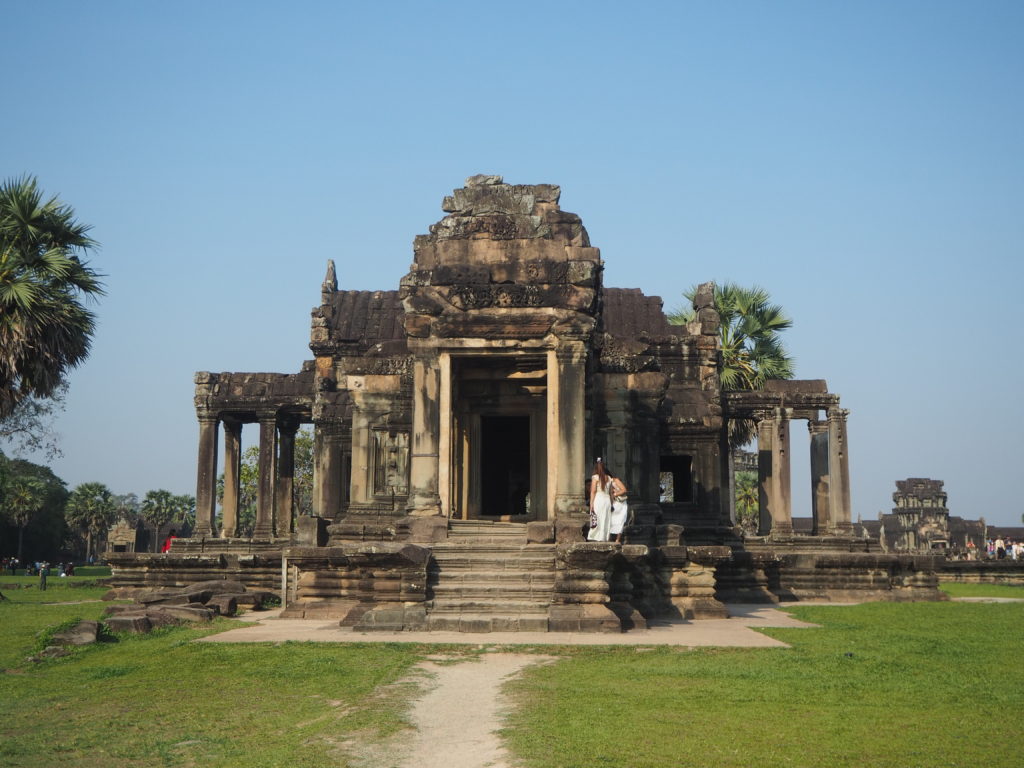
Angkor Wat was initially built as a massive Hindu complex back in the 12th century. Hinduism radiates throughout the complex, with most walls and doorways inscribed with different Hindu gods. But when Buddhism regained superiority in Cambodia, much of the Hinduism of the temple was scrapped. The statues of Hindu gods were beheaded throughout the temple, and in their places statues of Buddha were put in their place for worship. People still worship and pray at these Buddhist statues today, and there are certain parts in the temple you have to remove your shoes, which is temple custom.
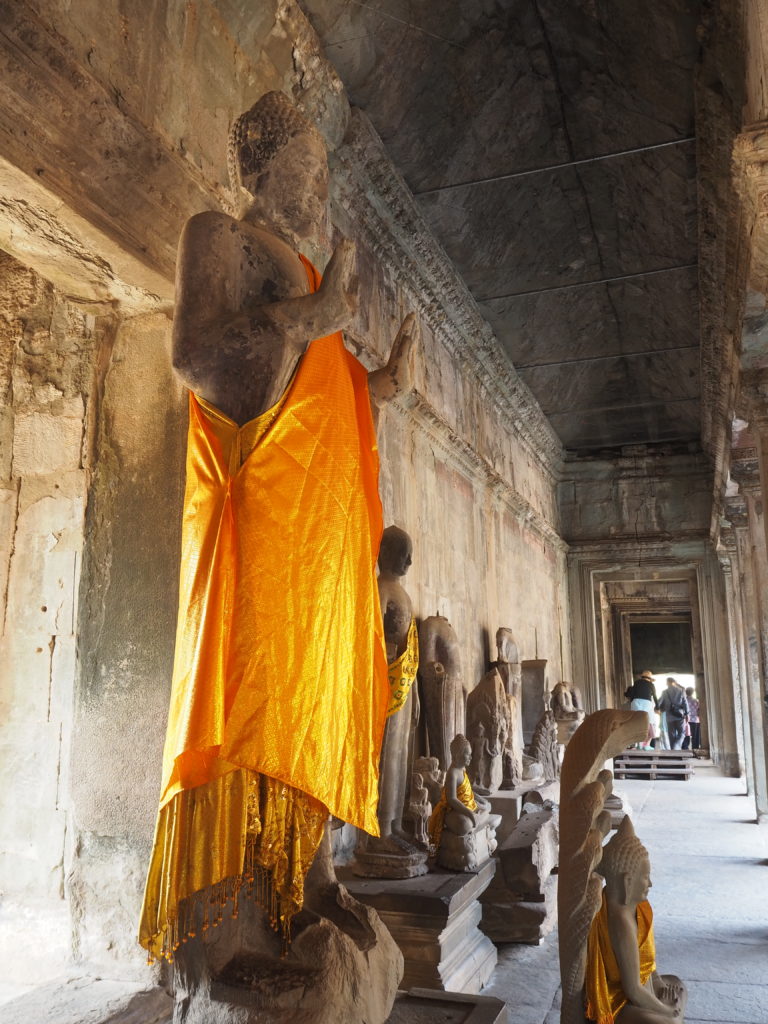


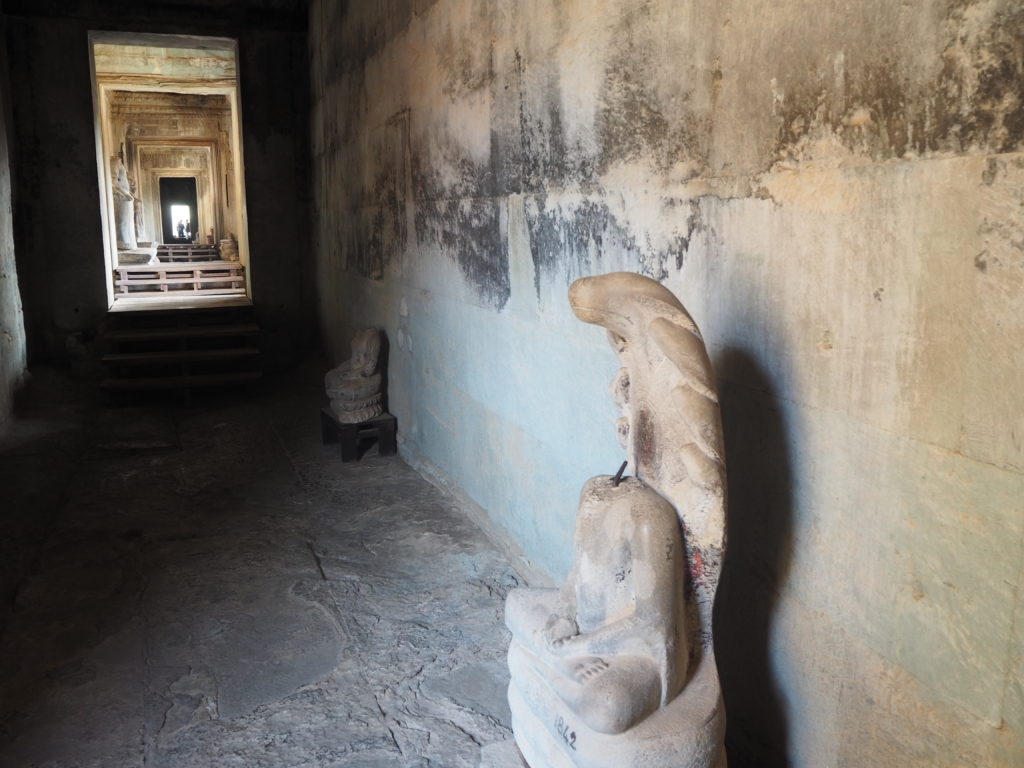

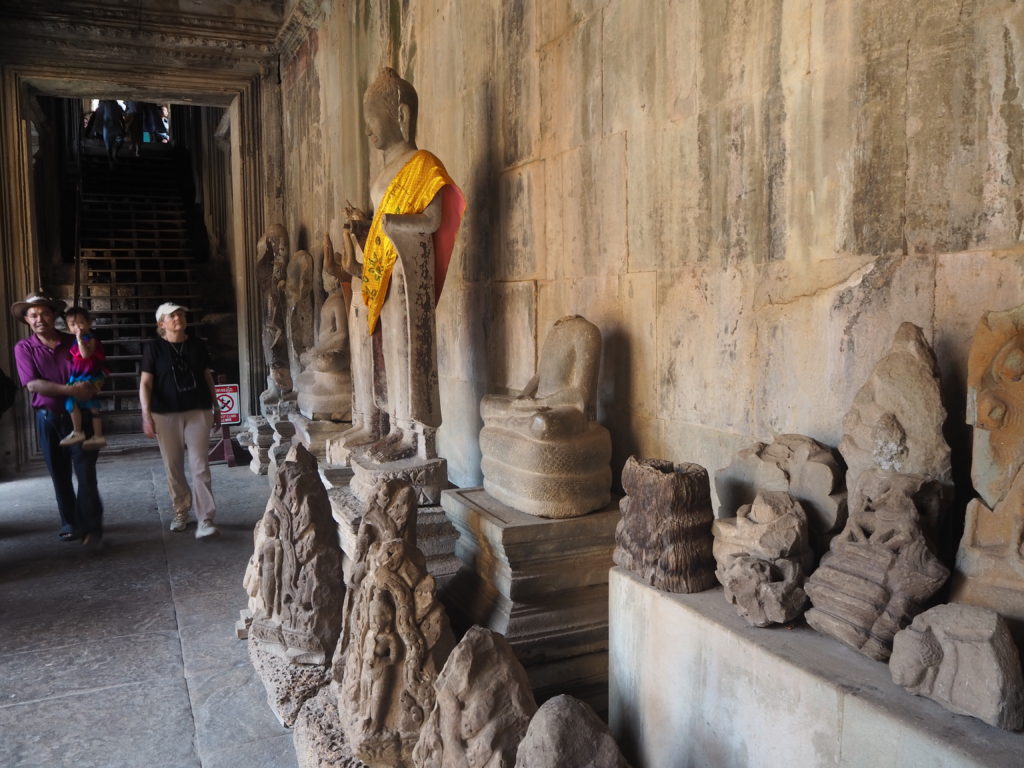
Once your inside the temple though, your not really inside the temple. Past then walls of the entrance courtyard lies the inner courtyard, encapsulating another set of walls and the temple itself.
This courtyard was much less visited by everyone, and for a short while, we had the temple to ourselves. We could explore a couple more satellite buildings on our own. The noise of conversation and footsteps was silent. It was just us, and one of the largest ancient temples in the world, at least for a short while.



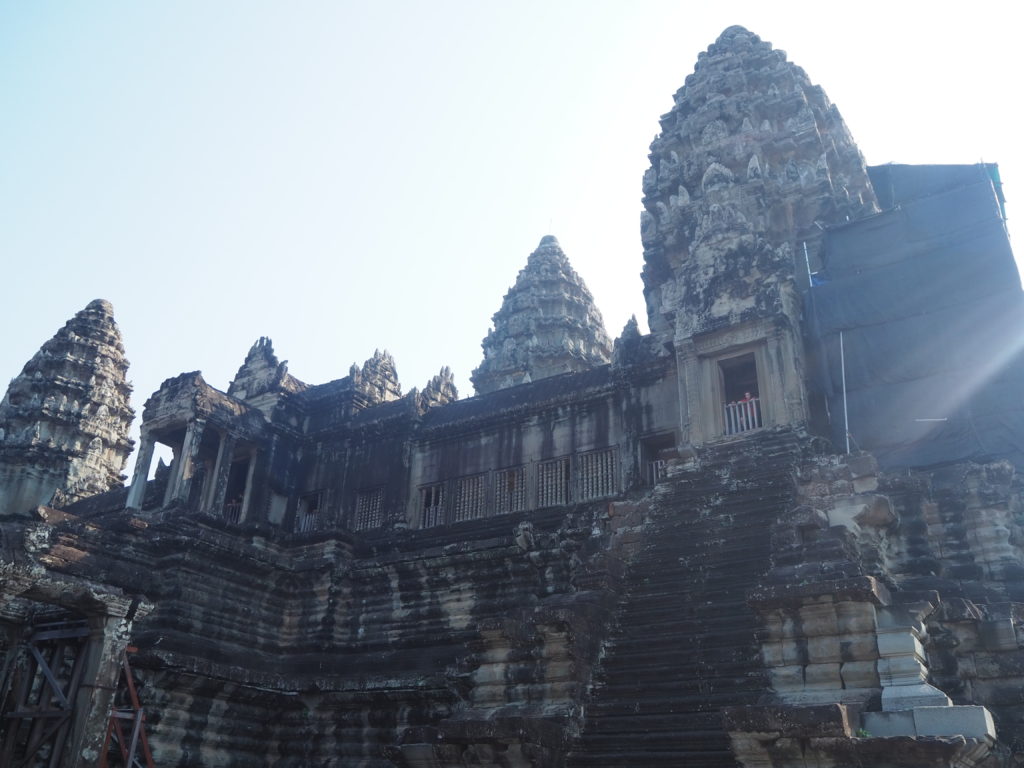
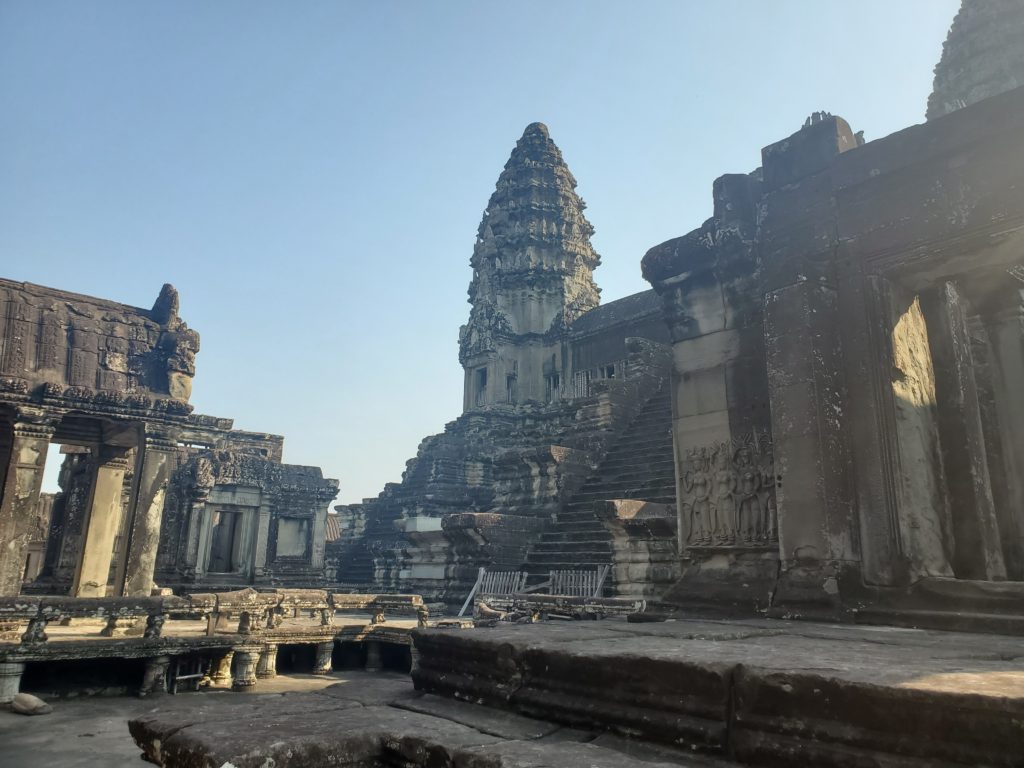
After serenity we dove back into the temple. The final inner ring was somewhat narrow, and the steep staircases that dotted every entrance blocked off. In their place, a modern, but still steep, wooden staircase was put in place, allowing people to ascent to the upper levels of the centre temple to explore. We followed the thousands of people who had done it earlier that day, and headed up the stairs.
The upstairs was really cool. The floor is laid our in quadrants, sliced by the cardinal directions like the rest of the temple. From the top you could get a great view of the courtyards and forts beyond the walls of Angkor Wat. In the middle, facing each cardinal direction were four Buddha statues that people were praying at.
The temperature at this point in the day was really hot. The sandstone kept the heat of the sun really well. Many avoided the sunny courtyards that were up top in favor of the covered hallways.
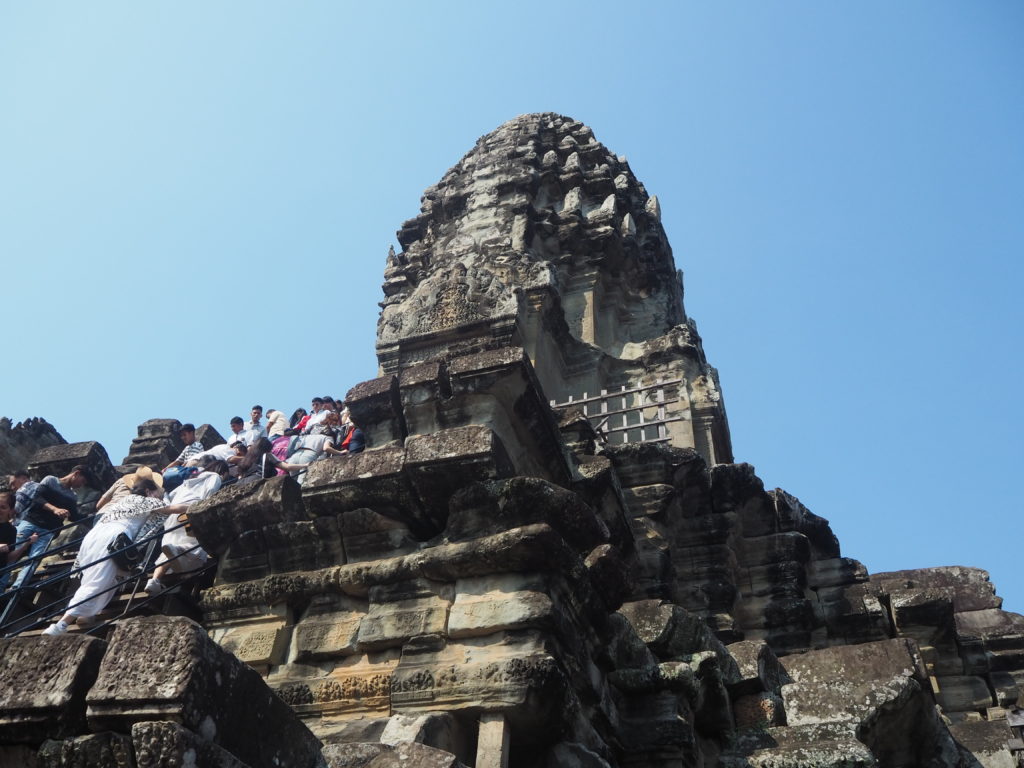
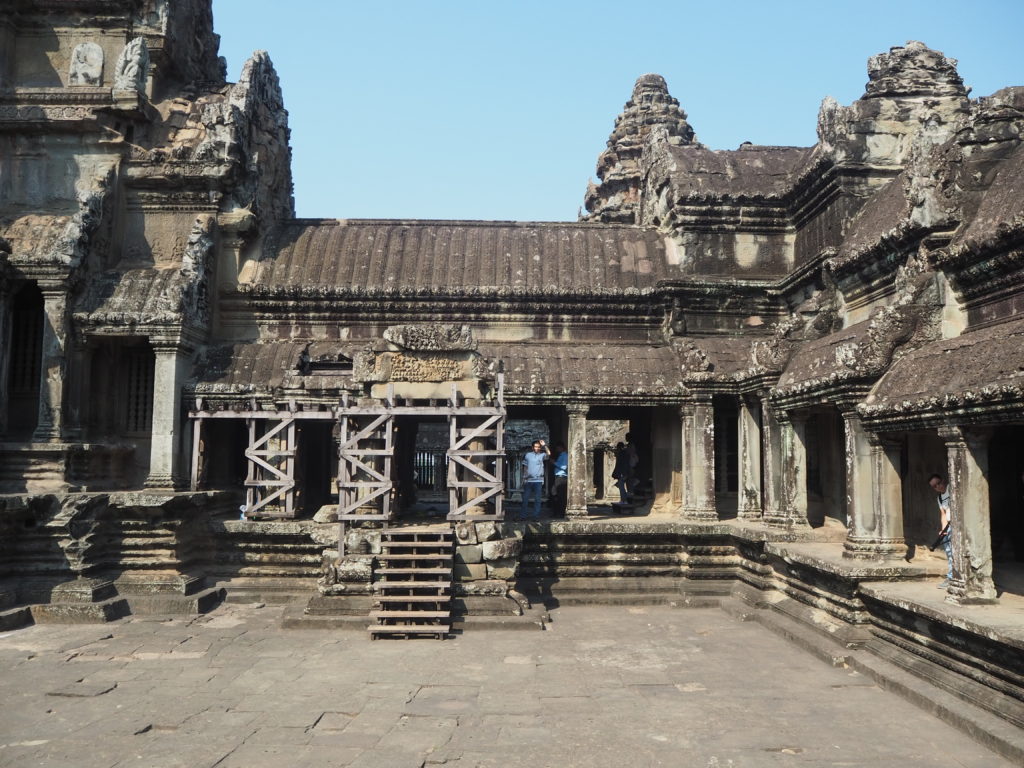
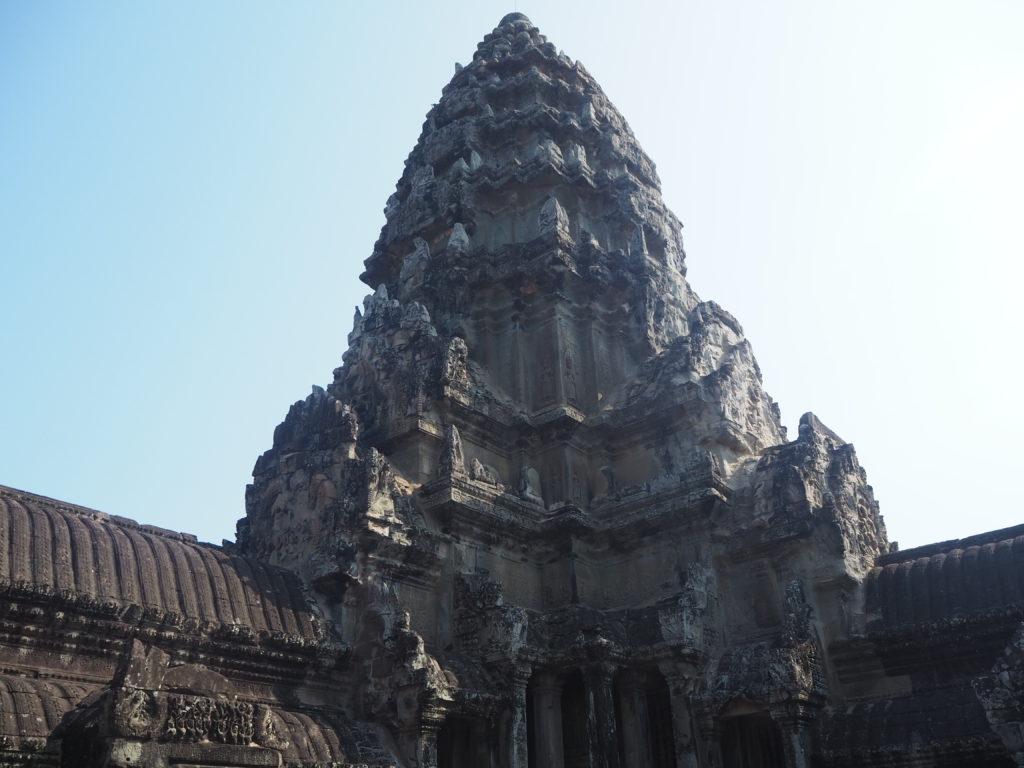

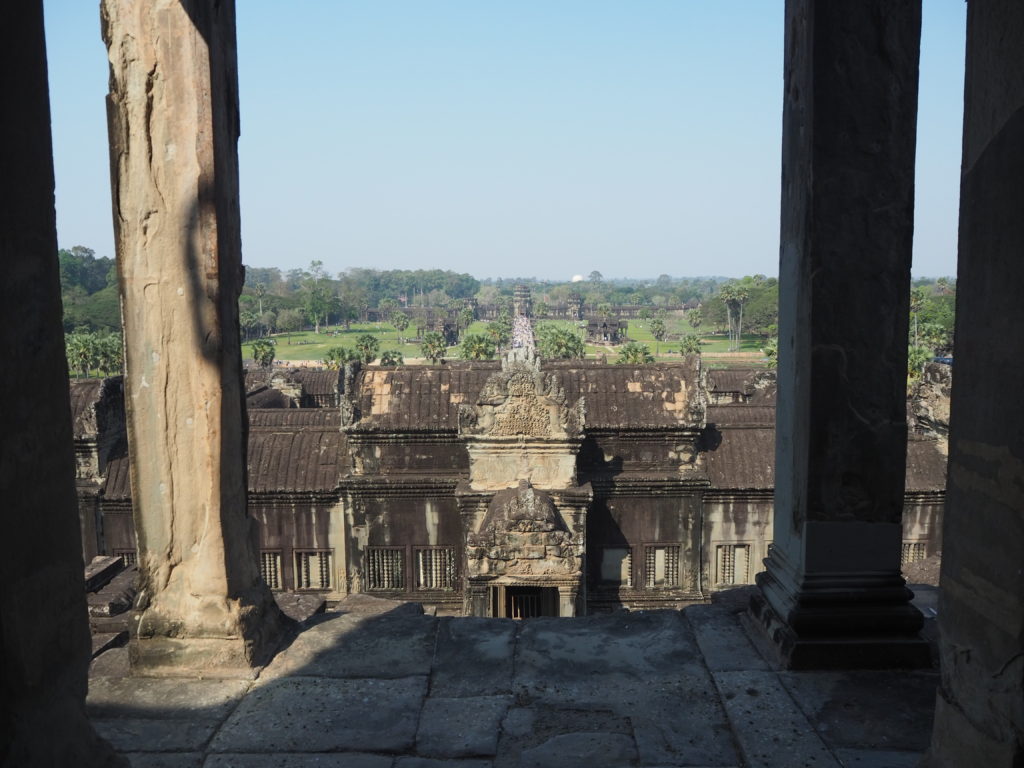
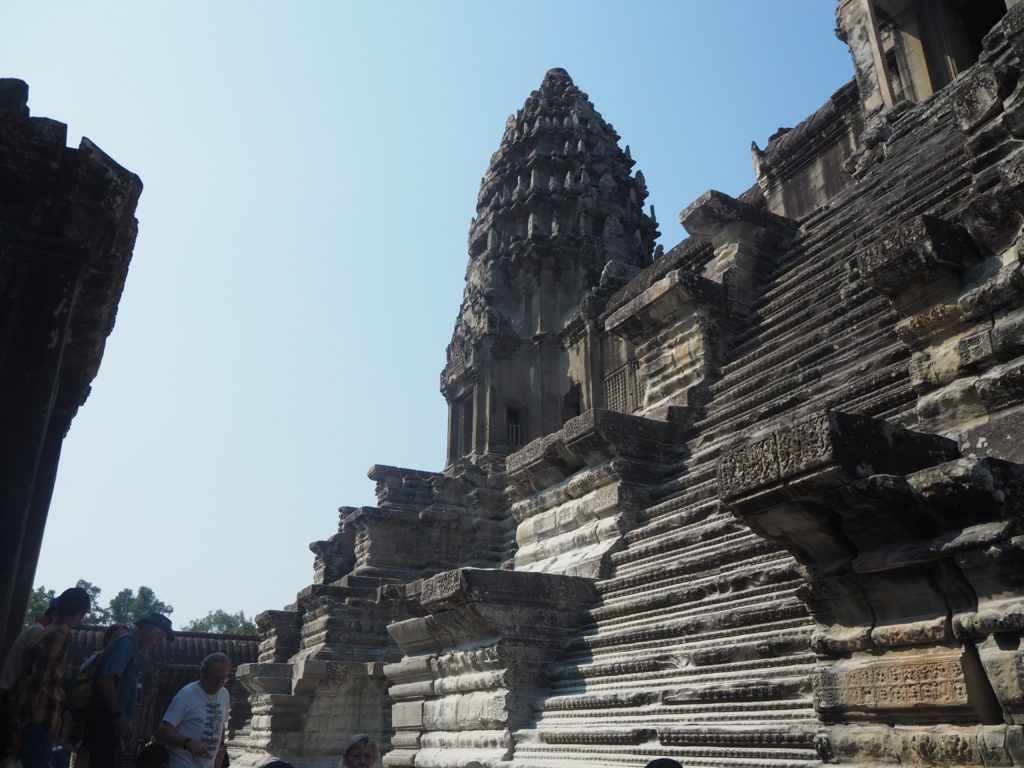
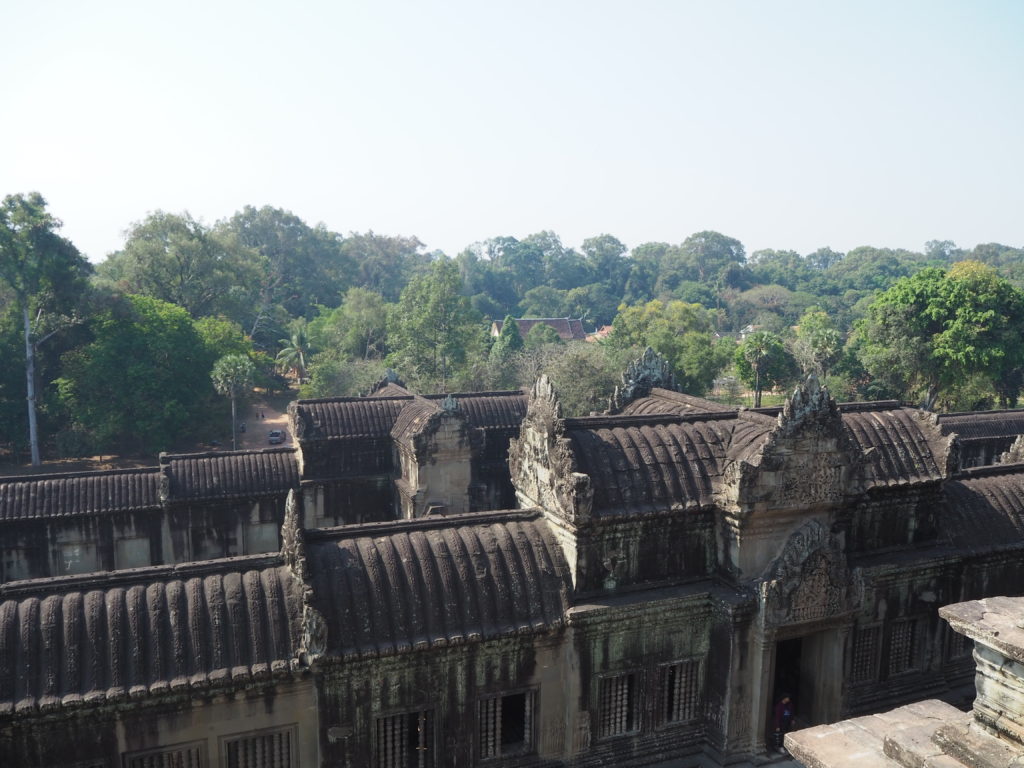

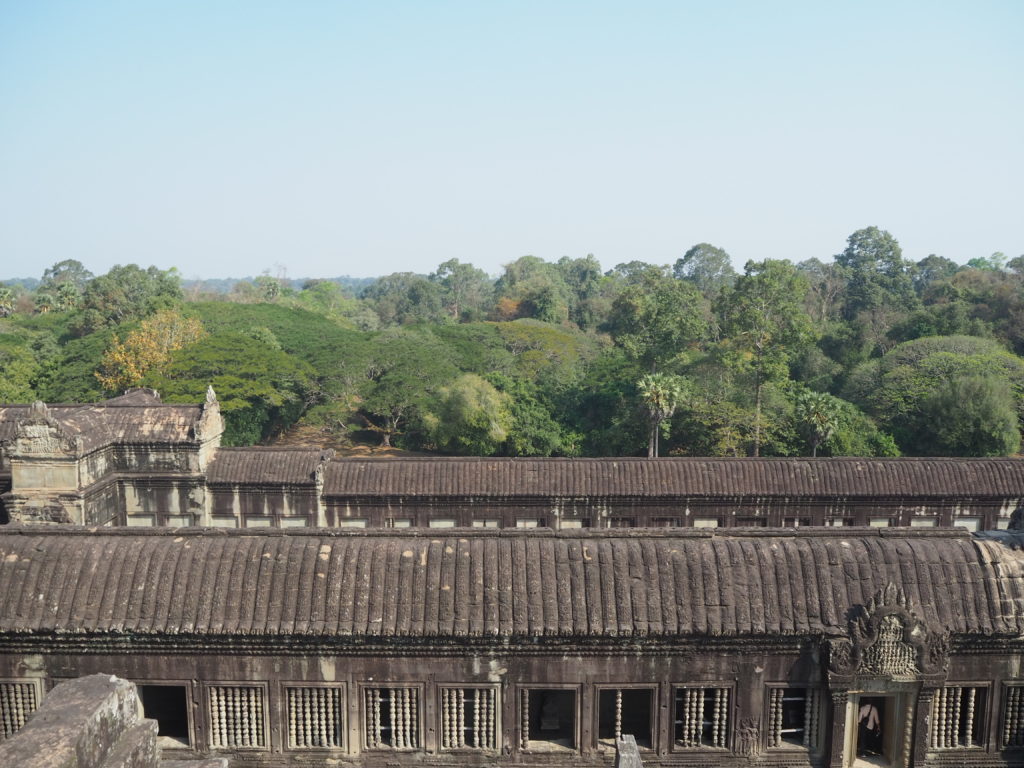
We could have spent a lot more time at Angkor Wat. There was the whole other side to walk though! Many unassuming rooms caught between the stones of the temple. Many more stone murals of great conquests. It’s quite easy to get lost in the complex. But we have a lot more on our plate for the day. We took one last look at the temple from the other side.


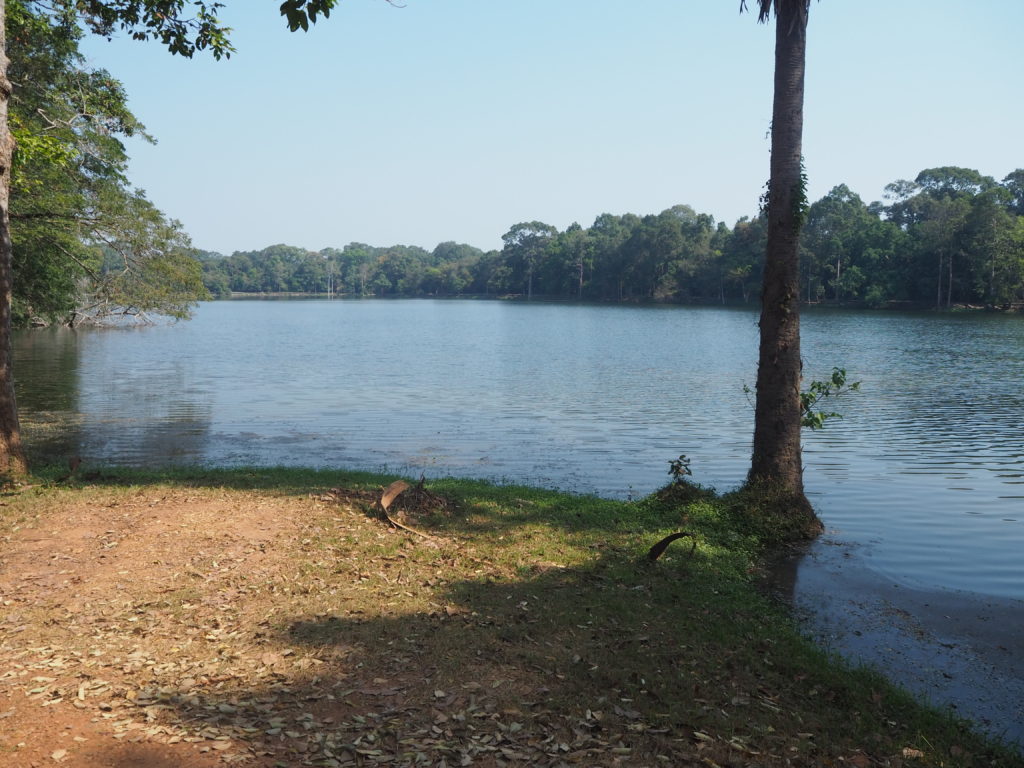



That was our first temple of the day. We have seven more to go. In an effort to not overload the servers of this website with photo’s for one blog, the rest of those temples will be another episode in our adventures. See you there!

Angor is deservedly a pinnacle for temple ruins, large and ancient, full of history. Built when Europe was still in the dark ages tells the stories of the rise and fall of empires, the dharma & karma of life.
Very photogenic, you do your best to keep the crowds out of your pics. The oppressive heat of the day doesn’t come thru in the photos, you do well to look cool but can obviously be a grind. Nice to have a trusty driver getting yourselves around, keep rolling.
Great photos. I remember how hot it was at 7am when we were there. I wonder what your thoughts are about seeing Angkor as a youth and as an adult.
What a variety of sights and experiences you are experiencing!!!! Awesome! And all your personal possessions go with you where ever you go!! That must take some organizing. Your water cave experiences fascinate me the most.
Well … not going to comment on every page of your temple exploring. It is interesting the amount of years, resources, and lives invested in originally creating these structures at the time. Temples, pyramids, castles, coliseums … all old cultures seem to have them for different reasons at the time. With Canada only being 156 years old and the USA at 246 years …. you just don’t experience these things. Glad you enjoyed it.